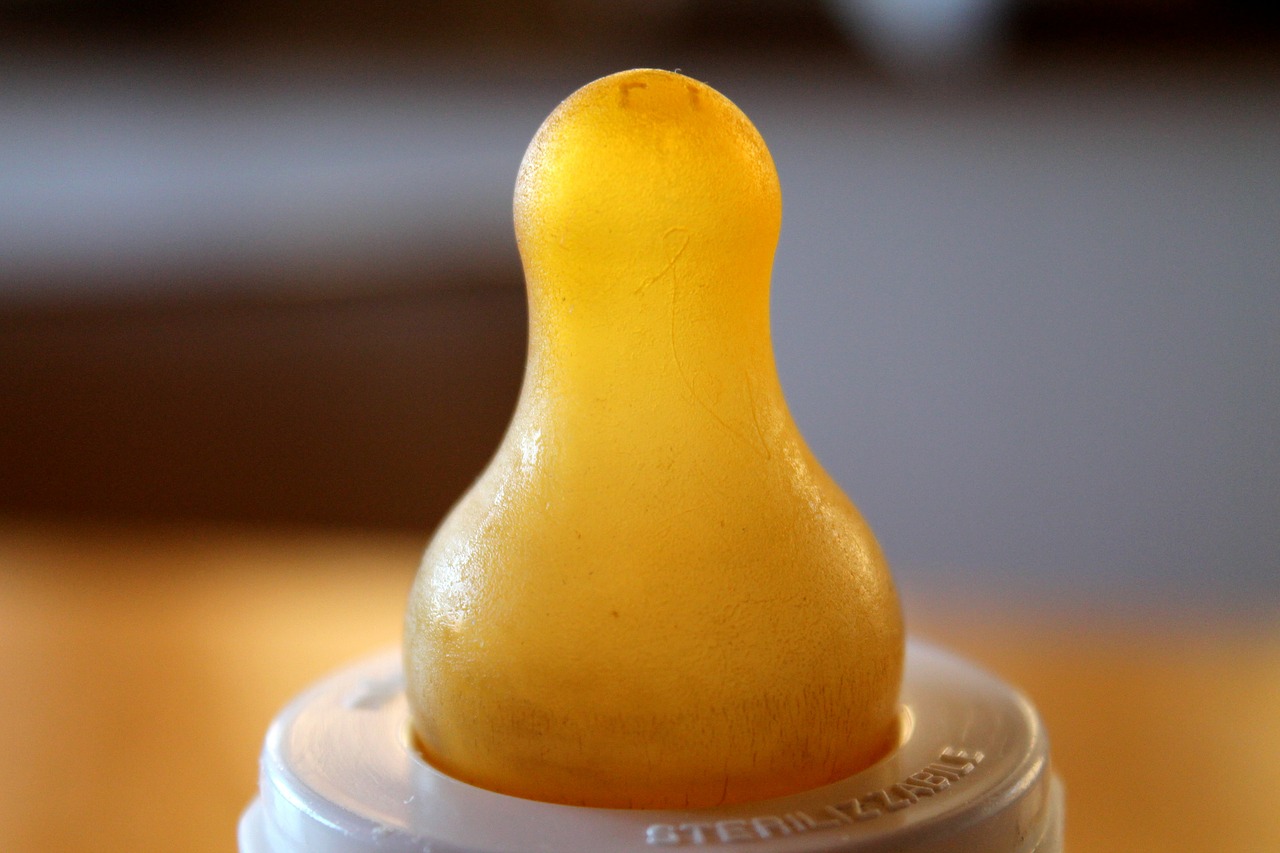This is the 2nd part of our 3 guide series on best baby bottles for breastfed babies. If you are trying to introduce your baby to the bottle, you may want to check out part 1: 9 Tips to introduce your breastfed baby to the bottle. That article includes some advice on how to transition from breast to bottle and help your baby accept the bottle if she happens to refuse it.
In the third article of the series we will recommend what are the best bottles for breastfed babies by brand.
What makes the best bottle for breastfed babies?
There are so many baby bottle shapes, nipples and brands out there that it can seem a bit overwhelming for a new mom to choose the best bottle for a breastfed baby. In this guide our aim is to make it as easy as possible for you to compare the different options available and decide what the best breastfeeding bottle is for you.
Baby Bottle Nipple
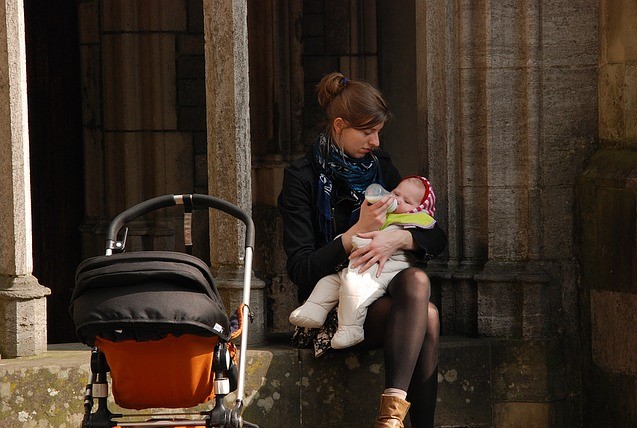 Baby bottle nipples have different shapes but also different flows. As your baby grows she will need a faster flow nipple to draw milk. Newborns always start with a slow flow nipple. Always check the label before buying a bottle as it will feature a guide on the recommended nipple flow by age.
Baby bottle nipples have different shapes but also different flows. As your baby grows she will need a faster flow nipple to draw milk. Newborns always start with a slow flow nipple. Always check the label before buying a bottle as it will feature a guide on the recommended nipple flow by age.
Depending on when you decide to start offering the bottle to your baby, you will need to pick the appropriate baby bottle nipple size. There are nipples for newborns, 1-3 months old, 3-6 months old, 6-12 months old. This can also vary according to the bottle brand.
Anti-colic bottle features
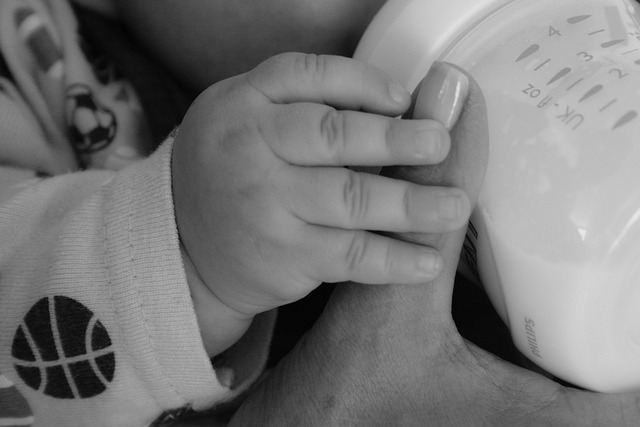 Nowadays most baby bottle brands come with an integrated colic-free system. It consists of a feature integrated to the nipple to prevent your baby from swallowing air bubbles, which could cause gas or colic.
Nowadays most baby bottle brands come with an integrated colic-free system. It consists of a feature integrated to the nipple to prevent your baby from swallowing air bubbles, which could cause gas or colic.
Different brands will have different valve systems to prevent colic. From what we found, there is no single anti-colic system that works for everyone.
Regardless of the colic free feature, it is always important to take a few steps to prevent gas or colic:
1. Vent your baby at least once throughout and after the bottle feed to help release any air bubbles she may have swallowed
2. Feed your baby in an up-right or semi up-right position
3. Make sure that milk covers the nipple at all times to prevent your baby from swallowing air
What is the best bottle nipple for breastfed babies?
Baby Bottle Material
There are silicone and latex nipples, and it all depends on what “best” means to you. Latex is more soft and flexible than silicone but it is not as durable.
Some babies prefer one material over the other, so one option to optimise your bottle search is to buy 1 bottle brand with the 2 different nipple materials, if they are available for that brand.
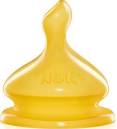
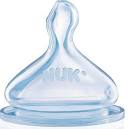
Bottle Nipple Shape
The nipple shape is another variable to consider when testing bottles for transitioning from breast to bottle. All bottles want to mimic breastfeeding and offer different designs that should help your baby.
Pay attention to how your baby reacts to the different baby bottle nipples. That will be the best guide on your search. Remember to be patient and try a variety of nipple shapes.
Bottle Nipple Sizes
There are many bottle sizes available to suit young and older babies. Bottles for newborns are the smallest of the range and the size may vary depending on the brand. Some go from 4oz/ 125ml to 9oz/260ml for older babies. It is recommendable to start with the smallest size if you are feeding a newborn.
Deciding what the best bottle for a breastfed baby is
It is important to look at the bottle material and the nipple. Both are important as the nipple will be in contact with your baby’s mouth, whereas the bottle will be in contact with your milk. Some moms prefer glass baby bottles and some others prefer BPA plastic, silicone or stainless steel ones. There are advantages and disadvantages to each and we have summarised them below:
Glass Baby Bottles
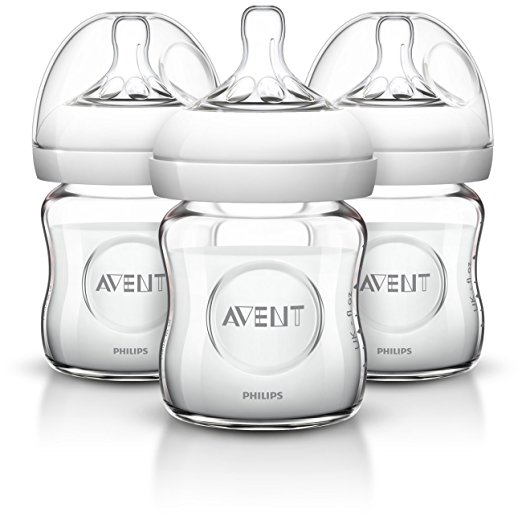 If you are concerned about your baby being in contact with the chemicals found in plastics, then a glass baby bottle may be a good option for you. These bottles have been around for decades and many moms choose these over plastic ones.
If you are concerned about your baby being in contact with the chemicals found in plastics, then a glass baby bottle may be a good option for you. These bottles have been around for decades and many moms choose these over plastic ones.
The drawback is that glass breaks from time to time, so make sure you thoroughly check your bottle before feeding your baby. Glass baby bottles should be disposed of as soon as they chip or break. Some companies have started selling glass baby bottles with a silicone sleeve for protection. Glass bottles may also be heavy for little hands to hold.
BPA-Free Plastic Baby Bottles
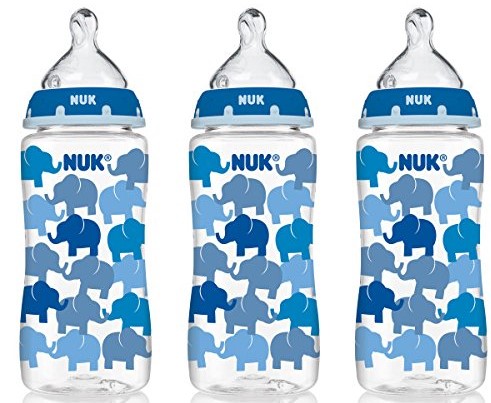 Plastic baby bottles are safe to use because they are made of food-grade plastic. In 2012 the FDA banned any baby bottles or sippy cups made of BPA material. Hence, if you choose to go with a plastic bottle, at least in the USA you can be sure you will get a BPA-free one.
Plastic baby bottles are safe to use because they are made of food-grade plastic. In 2012 the FDA banned any baby bottles or sippy cups made of BPA material. Hence, if you choose to go with a plastic bottle, at least in the USA you can be sure you will get a BPA-free one.
There are different opinions around plastic bottles used for babies, but undoubtedly they are the most affordable and popular ones.
BPA-free baby bottles are durable and resistant, however, you should dispose of them if they look worn out.
Stainless Steel Baby Bottles
 These bottles are also a great option for parents wanting to avoid plastic bottles. Some versions may be insulated, which means that they can keep the liquid inside warm or cold, such as a thermos would do.
These bottles are also a great option for parents wanting to avoid plastic bottles. Some versions may be insulated, which means that they can keep the liquid inside warm or cold, such as a thermos would do.
Unlike glass, there is less risk of breakage, so they last longer. They are also environmentally friendly as they are fully recyclable.
An obvious point that is worth mentioning if you are considering these bottles is that measuring milk may be more difficult, as they are not transparent like other materials. It may also be more difficult to know if your baby has finished her bottle, unless you grab it and either feel it lighter or open it to check the remaining of milk.
Stainless steel may sweat (if it is not insulated), so consider getting a baby bottle with a latex cover, so that it is not slippery for tiny hands.
Silicone Baby Bottles
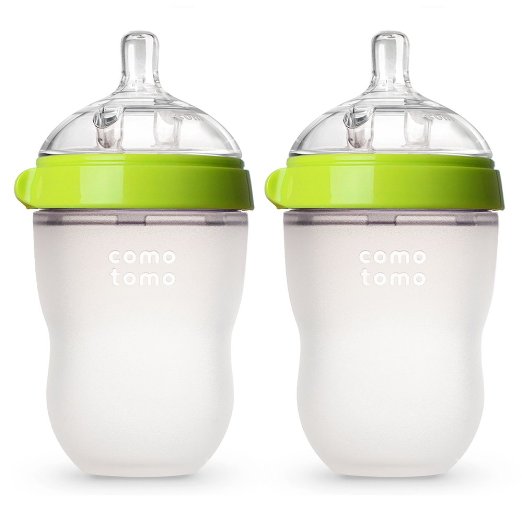 Silicone baby bottles are relatively new compared to other types of bottles. These bottles are soft to grab and they mimic a breast. Both the body of the bottle and the nipple are made of silicone.
Silicone baby bottles are relatively new compared to other types of bottles. These bottles are soft to grab and they mimic a breast. Both the body of the bottle and the nipple are made of silicone.
Silicone bottles are easy to clean (only use soapy water), durable and resistant. They are also light weight and soft to touch, ideal for baby to grab them.
If you have tried other materials and your baby rejects them, you may want to give these bottles a go. Comotomo baby bottles claim that 80% of babies transitioning from breast to bottle that had bottle rejection issues, took the Comotomo bottle.
How many baby bottles will you need?
First things first, start by trying a few different baby bottle brands and nipple shapes. Once you are certain of which bottle and nipple your baby prefers, you can decide how many to get.
The more bottles you have the less time you will spend cleaning and sterilizing baby bottles, nipples and other accessories.
To make the decision it is important to consider how many times you bottle feed your baby in a day. This may vary from family to family and it is entirely up to you. In my personal case, my baby started off with one bottle feed a day and the rest of the time I was breastfeeding. When she grew older and transitioned to cow’s milk she had 3 bottle feeds a day. Hence, we never needed more than 2 baby bottles.
Some parents who bottle feed their newborns from the start may choose to have 9 to 12 baby bottles sterilized and ready to go every day. Again, this is a very personal decision so think about what would work best for you and your family.
Key take outs
- Bottle materials: glass, plastic, silicone or stainless steel? All materials have pros and cons. The best way we can recommend you make a decision is to prioritize what is most important for you. If you are still not decided, give your favorite materials a try.
- Nipple: shapes and flows differ from brand to brand. If your baby is not latching easily to the bottle, the best you can do is test a few different options of nipple shapes. Regarding nipple flow you may need to be a bit more careful in selecting the nipple according to your baby’s age.
- Remember to be as observant as you possibly can. That way you may be able to pick up any signals your baby gives you to guide your bottle search. If baby continues to reject a bottle, just try another one and try to be persistent. If you need more tips, check them out here: 9 Tips to introduce your breastfed baby to the bottle
Are you ready to move on? Next step is brand reviews and recommendations. Click here to go to our brand review on best baby bottles for breastfed babies.
Was this article useful? Please leave us a comment!

